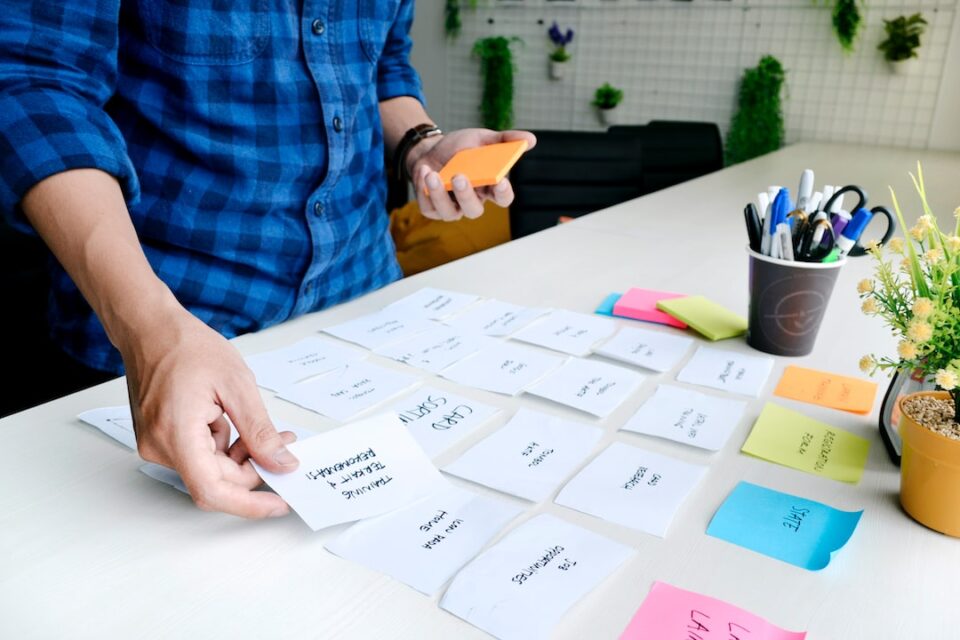The Art of Designing Effective Presentations: Key Tips and Tricks
In today’s digital age, presentations have become an integral part of our professional and personal lives. Whether you are a student presenting a project, an entrepreneur pitching a business idea, or a professional delivering a webinar, the ability to design and deliver an effective presentation is crucial. However, creating a captivating presentation that effectively conveys your message can be a daunting task. In this blog post, we will explore the art of designing effective presentations and share some key tips and tricks to help you create impactful and memorable slides.
1. Define Your Objective:
Before diving into the design process, it is essential to clearly define the objective of your presentation. Ask yourself what you want to achieve, what message you want to convey, and what actions you want your audience to take. Having a clear objective will help guide your design choices and ensure that your presentation stays focused and impactful.
2. Keep it Simple:
One of the biggest mistakes presenters make is overloading their slides with information. Remember, your slides should complement your presentation, not overshadow it. Use concise and clear bullet points or visuals to convey your message. Keep the text minimal and avoid cluttering your slides with unnecessary details. Remember, simplicity is key to a successful presentation.
3. Use Visuals:
Visuals are powerful tools that can significantly enhance the impact of your presentation. Incorporate relevant images, charts, graphs, and infographics to help convey your message in a visually engaging manner. Visuals not only make your presentation more visually appealing but also help your audience understand complex concepts more easily.
4. Choose Fonts and Colors Wisely:
Fonts and colors play a significant role in designing effective presentations. Select fonts that are easy to read and avoid using too many different fonts in a single presentation. Stick to a maximum of two fonts to maintain consistency and visual coherence. Additionally, choose colors that complement each other and are easy on the eyes. Use contrasting colors for text and background to ensure legibility.
5. Maintain Consistency:
Consistency is key to creating a professional-looking presentation. Use consistent fonts, colors, and layouts throughout your slides. This consistency will not only make your presentation visually pleasing but also make it easier for your audience to follow along. Consistency helps create a flow and a sense of organization that keeps your audience engaged.
6. Tell a Story:
Humans are naturally drawn to stories. Incorporating storytelling elements into your presentation can make it more engaging and memorable. Instead of simply listing facts and figures, try to tell a story that connects with your audience on an emotional level. Use anecdotes, case studies, or personal experiences to make your presentation relatable and impactful.
7. Practice, Practice, Practice:
Designing a visually appealing presentation is only one part of the equation. Effective delivery is equally important. Practice your presentation multiple times to ensure a smooth and confident delivery. Pay attention to your tone, body language, and timing. Remember, the more familiar you are with the content, the more confident and persuasive you will be during your presentation.
8. Engage Your Audience:
Creating an interactive experience can significantly enhance the impact of your presentation. Incorporate opportunities for your audience to participate, ask questions, or share their thoughts. Use interactive tools like polls or quizzes to actively engage your audience. By involving your audience in the presentation, you make them feel part of the experience and increase their retention of the information.
9. Use Technology to Your Advantage:
Take advantage of the various technological tools available to enhance your presentation. Utilize presentation software like PowerPoint, Prezi, or Keynote to create visually stunning slides. Explore features like animations, transitions, and multimedia elements to make your presentation dynamic and engaging. Additionally, consider using tools like video conferencing or screen sharing to reach a wider audience.
10. Seek Feedback and Learn:
Finally, be open to feedback and continuously strive to improve your presentation skills. After each presentation, ask for feedback from colleagues, friends, or audience members. Take note of areas where you can improve and actively work on enhancing your presentation skills. Remember, learning is a lifelong process, and every presentation is an opportunity to grow and refine your skills.
In conclusion, designing effective presentations is both an art and a science. By following these key tips and tricks, you can create presentations that are engaging, impactful, and memorable. Remember, simplicity, visuals, consistency, storytelling, and practice are the pillars of a successful presentation. Embrace the power of technology and seek continuous improvement. With dedication and practice, you can master the art of designing effective presentations and captivate your audience every time.

